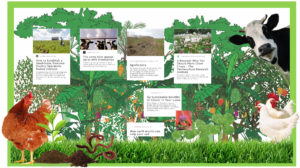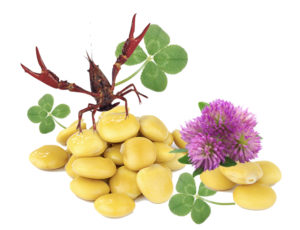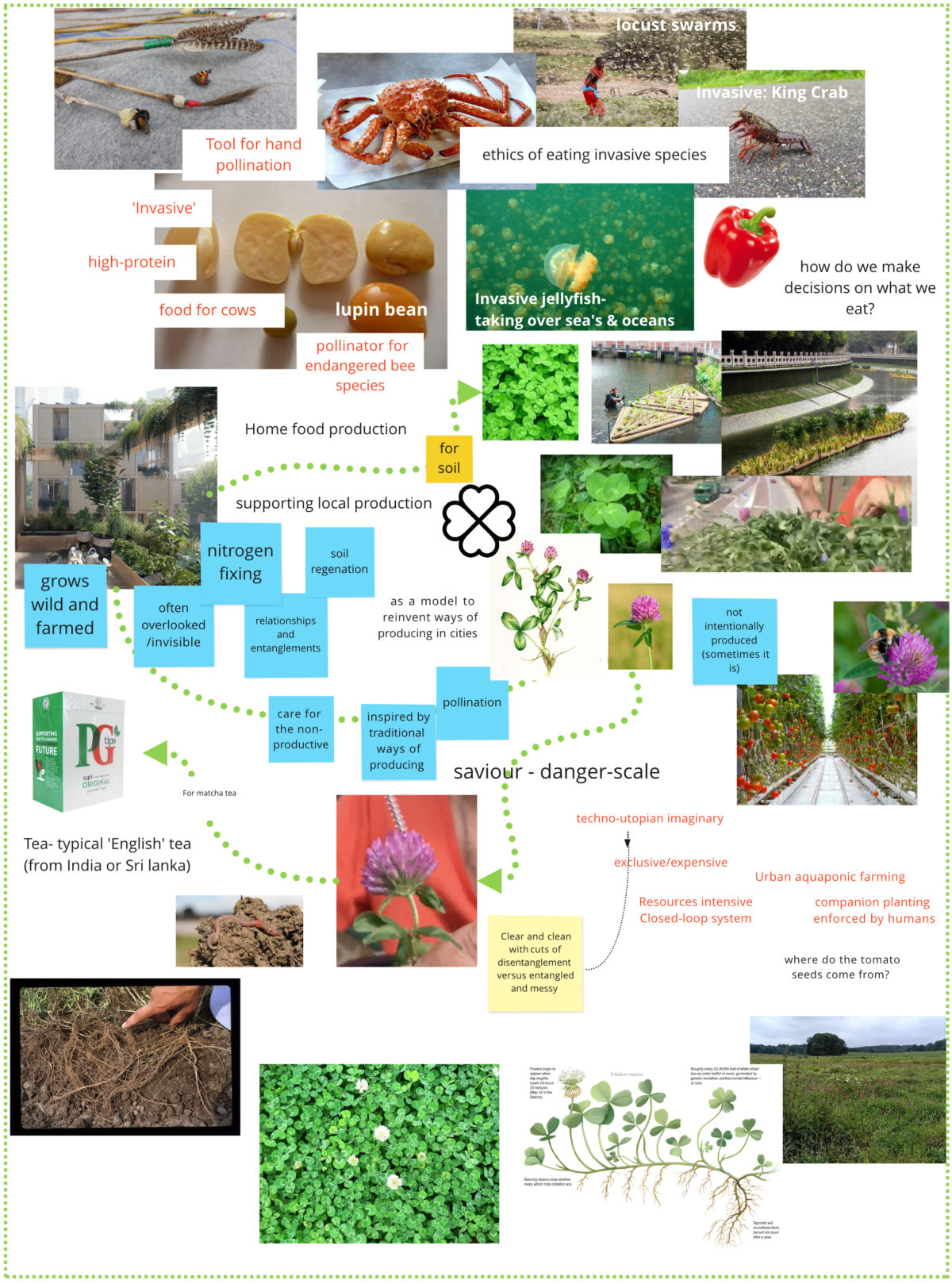
We dug deep into the complex entanglements of more-than-human food systems and the ethical conditions underlying who should eat whom, what should be grown where and for whose benefit. We considered the intricate position of invasive species, commonly considered as unwanted ‘pests’ causing harm to ecosystems.
Despite this ungracious reputation, many invasive species can have positive effects on their surrounding habitats, although often in less obvious ways.
“It’s time to think of food production that is not immediately beneficial to humans but that will benefit humans in a longer term”
– Food Production group
In Sweden, for instance, lupin bean is considered an unpopular garden invader that should be terminated. Yet, lupin is also a good source of protein for cows and some people admire the lupin plant for its aesthetic beauty.

Similarly, the red swamp crayfish that likes to invade Dutch rivers is not on the country’s list of welcomed guests – it harms the water quality and prevents the growth of some plants as well as fish. Since the crayfish is quite hard to eliminate, Dutch locals have been encouraged to…eat it.
Changing local mindsets from considering crayfish as a ‘bad’ invader to accepting it as a delicacy might help protect local aquatic ecosystems.
To extend our discussion, we prototyped a floating platform of clover plants to be set up in cities and help promote local biodiversity. In the UK, clover is often considered a pest that hijacks people’s lawns. However, clover is an incredibly potent plant for fixing soil nitrogen. Our platforms would reposition clover as an important sustainability agent, rather than an interloper.

So, are all invasive species ‘bad’? Who should decide? Based on what criteria? We propose that, for food production to be sustainable, we need to move beyond a human-centric appraisal of immediate practical benefits of food production processes. Caring for seemingly un-productive and hence often overlooked or undesirable species can be a means for us to care for sustainable food futures.